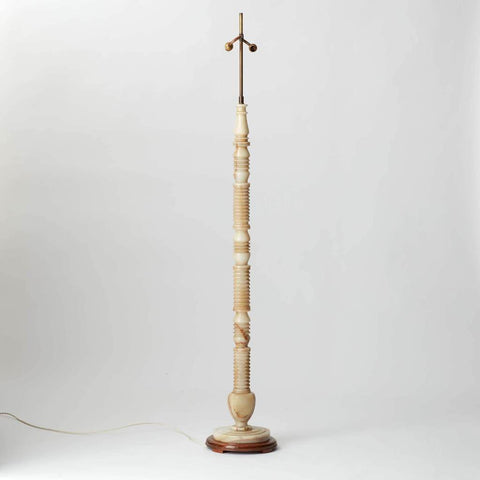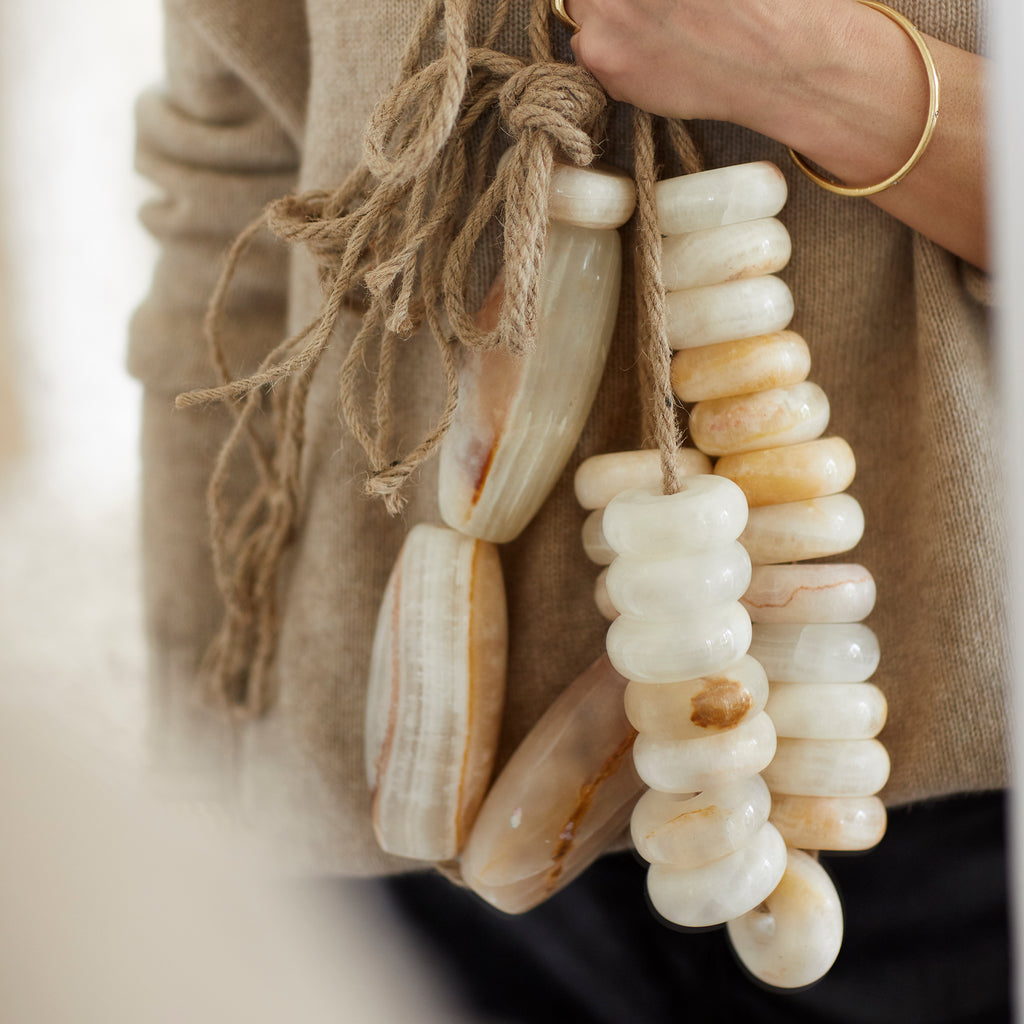Heavenly Onyx: Interior Design and Gemstones
Onyx gets its name from the Ancient Greek word for nail. It is said that the goddess Aphrodite was resting on the bank of the River Indus when Eros fired an enchanted arrow at her. The tip of the arrow sheared off her nails and they fell into the water coming to rest on the riverbed where they turned into onyx.

Vintage Chunky Onyx Barrel Garland, AU
How does Onyx form in nature?
The geological truth behind onyx’s true formation is no less amazing than this ancient myth. Just as stalactites and stalagmites are formed by the precipitation of minerals from water trickling slowly through caverns and caves, so too does onyx come into being.
A sedimentary rock with a cryptocrystalline construction, onyx acquires its translucence as a result of the size and uniformity of its crystals. It’s one type of the silicate mineral chalcedony, which in itself is a form of microcrystalline quartz.
Agate is also a type of layered chalcedony, but whereas the bands of silicate mineral that make up this gemstone are curved, those that make up onyx run parallel.

Pair of Vintage Onyx Table Lamps, AU
Onyx comes in many forms
In times gone by, all chalcedony was referred to as onyx whatever its colour or banding. Often still considered to be a black stone, onyx comes in every hue. If layered, the different shades that make up its bands are reminiscent of the veining in marble and as such, they lend it a similarly timeless appeal. A light rock, whatever its colour, onyx is soft and fragile and while not as robust as marble, it certainly has a similar translucence and uniqueness.

Pair of Vintage Onyx Green Plinths, AU
Onyx & Interiors
Onyx is a stone that, again, just like marble, sits beautifully in any interior, be that contemporary or traditional. This is partly down to its versatility; whether it embodies discreet neutrality or is a more dynamic, dramatic piece, onyx has the ability to pair sensitively with other materials, both organic and manufactured.

Vintage Onyx and Brass Floor Lamp, AU
Ancient Superstitions - The History of Onyx
The superstitious beliefs of many different peoples have centred upon onyx. In Persia it was thought that the semi-precious stone could relieve epilepsy whereas in Renaissance Europe, a person who held it would become more articulate. The Ancient Romans, believing it would lend them courage in battle, carried onyx amulets engraved with Mars, the god of war. English midwives meanwhile thought it could ease childbirth and in periods of mourning during Victorian times, the stone was used to convey grief and sadness.
For thousands of years therefore, onyx has been used for a multitude of purposes. As a precious gemstone in jewellery or for ornamental carvings, it was highly prized by both the Romans and the Ancient Greeks. Relatively soft and therefore comparatively easy to carve, it was used to make figurines of the gods for burials and ceremonies, and also, for other more utilitarian purposes like bowls and cups.

Vintage Onyx Decanter, Glasses and Tray, AU
Nowadays, as a gemstone, onyx is thought to bring strength and stamina, enhancing both durability and self-control. Said to deflect negativity whether the source is internal or external, it protects against bad luck arising from jealousy. Whether or not this is true, what can certainly be said is that an object hand carved from onyx - with its smooth patina and diaphanous quality - is an asset to any space.

Pair of Vintage Cream Bookends, AU
Every single piece of onyx in AU’s collection has been handpicked to fit with our ethos of sustainability through re-usability; each object has been hand crafted by artisans and stonemasons rather than on an industrial scale. T
To browse AU’s collection, please click here.
Continue reading







